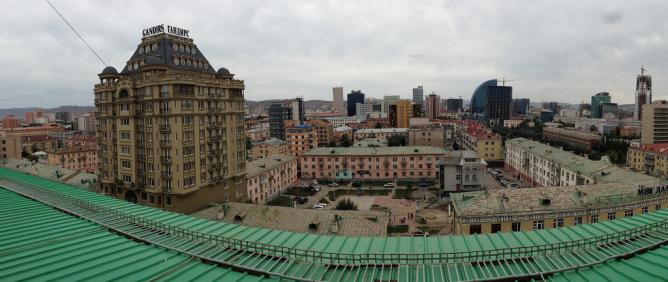The Best Galleries And Museums In Mongolia's Capital City, Ulaanbaatar

Mongolia’s capital city, Ulaanbaatar, has experienced sweeping changes in attitudes towards its arts and culture. From the celebrated religious artworks of monk and artist Zanabazar to the near destruction of Buddhist culture during the Communist purges of the 1930s, Ulaanbaatar is now steadily building a vibrant contemporary art scene that celebrates Mongolia’s long-standing cultural traditions, while encouraging modern art creation.

1. Mongolian National Modern Art Gallery
Art Gallery

2. Art Gallery
Art Gallery

3. Fine Arts Zanabazar Museum
Museum

4. Red Ger Art Gallery
Art Gallery, Building, Museum, Theater
Red Ger Art Gallery
Located in busy central Ulaanbaatar within the Khan Bank Building, the Red Ger Art Gallery is overseen by the Arts Council of Mongolia, which supports the development of arts and culture in the country. Launched in 2002, Red Ger aims to promote Mongolian art both within the country and abroad while nurturing and supporting new, emerging talent. To this end, 70% from the sale of each painting goes directly to the artist that created it, while the remaining 30% goes to the Arts Council to fund further arts projects. The gallery has also exhibited western modern art, as it did with Norman Rockwell’s America, a show jointly organised by the Arts Council, the Norman Rockwell Museum and the US Embassy in Mongolia to celebrate the 25th anniversary of diplomatic relations between Mongolia and the US. It featured Rockwell’s famous works ‘The Problem We All Live With’ and ‘No Swimming.’
 © Red Ger Art Gallery
© Red Ger Art Gallery5. Marshal Art Gallery
Art Gallery

6. National Museum of Mongolia
Building, Museum

7. Gandan Monastery
Monastery

8. Victims of Political Persecution Memorial Museum
Building, Museum

9. Winter Palace of the Bogd Khan
Museum

10. Choijin Lama Temple Museum
Monastery, Museum

Since you are here, we would like to share our vision for the future of travel - and the direction Culture Trip is moving in.
Culture Trip launched in 2011 with a simple yet passionate mission: to inspire people to go beyond their boundaries and experience what makes a place, its people and its culture special and meaningful — and this is still in our DNA today. We are proud that, for more than a decade, millions like you have trusted our award-winning recommendations by people who deeply understand what makes certain places and communities so special.
Increasingly we believe the world needs more meaningful, real-life connections between curious travellers keen to explore the world in a more responsible way. That is why we have intensively curated a collection of premium small-group trips as an invitation to meet and connect with new, like-minded people for once-in-a-lifetime experiences in three categories: Culture Trips, Rail Trips and Private Trips. Our Trips are suitable for both solo travelers, couples and friends who want to explore the world together.
Culture Trips are deeply immersive 5 to 16 days itineraries, that combine authentic local experiences, exciting activities and 4-5* accommodation to look forward to at the end of each day. Our Rail Trips are our most planet-friendly itineraries that invite you to take the scenic route, relax whilst getting under the skin of a destination. Our Private Trips are fully tailored itineraries, curated by our Travel Experts specifically for you, your friends or your family.
We know that many of you worry about the environmental impact of travel and are looking for ways of expanding horizons in ways that do minimal harm - and may even bring benefits. We are committed to go as far as possible in curating our trips with care for the planet. That is why all of our trips are flightless in destination, fully carbon offset - and we have ambitious plans to be net zero in the very near future.
- Post ID: 111445
- Sponsored? No
- View Payload


